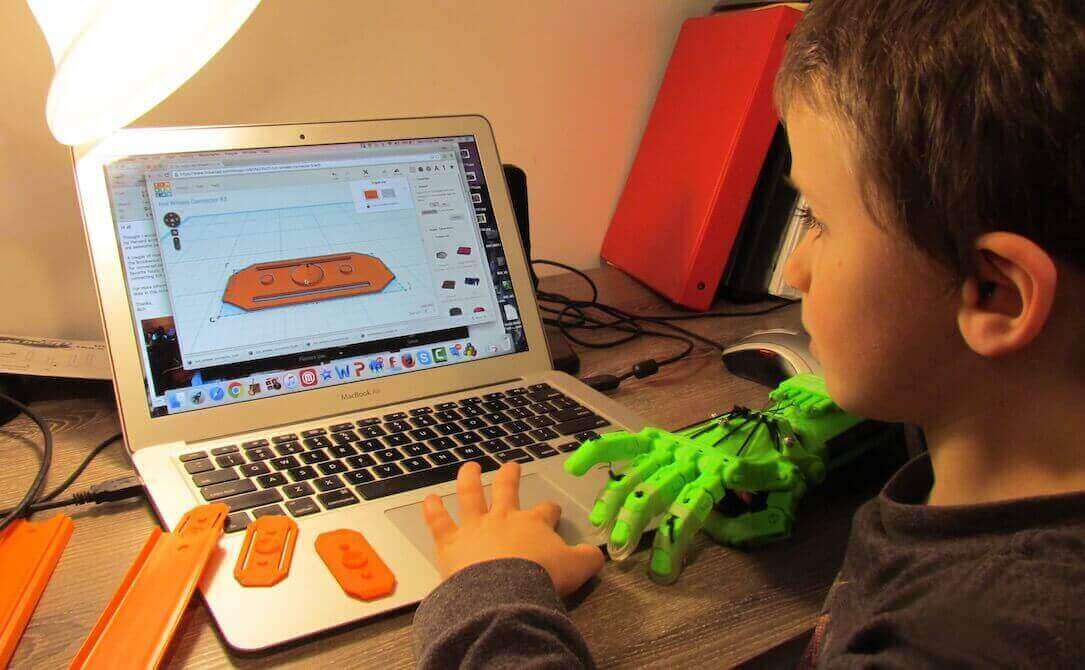What better way to teach students 3D printing than to have them solve real life problems? This is how students at Brookwood School learn.
Don’t Miss: Teacher's Guide to 3D Printing Curriculum
Rich Lehrer is a not your average teacher. In fact, he recently won a 2017 Infy Maker Award and was named as a PBS Digital Innovator.
Lehrer’s work with 3D printing began back in 2013. He worked with his 8th grade students at Brookwood School in Manchester-by-the-Sea, Massachusetts to design and 3D print a prosthetic hand for his son, Max.
Max was born with symbrachydactyly, which prevented the fingers on his right hand from forming. However, Lehrer and his students spent a year developing a prosthetic enabling three-year-old Max to pick up things up with his hand for the first time in his life.
Lehrer explains how this heart-warming and powerful experience pivoted his career. He has since been working with 3D printing and designing while helping students figure out how they can help others. In an interview with Ultimaker he says:
“In addition to being a transformative experience for all involved, this project set us on a journey of innovative designing and making that has benefitted our students in countless ways, that currently manifests itself in a number of programs at our school…”
Since then, Lehrer has continued to do a great job at teaching design skills. For a recent project, students worked with senior citizens from Harborlight House in Beverly.
Teaching Collaboration and Empathy at Brookwood School via 3D Printing
The idea of working with others in the community was born when a colleague, Annie Johnson, asked an important question:
“Why don’t we look for places outside of our school where we could get groups to submit problems to be solved through a design process?”
Lehrer and Johnson developed this idea and integrated it as part of the school’s annual Steep Week of courses. One such course involved a small group of sixth graders working on their D-Zign Girlz class.
The D-Zign Girlz went to Harborlight House and worked with a small group of senior citizens. Together, the group worked on problems facing seniors and strove to find solutions. They used Play-Doh or cardboard before moving onto designing and 3D printing objects, like bagel holders for safe slicing and an easy to pick up bingo marker.
After the success of this project, Lehrer and Johnson decided to roll out D-Zign Kidz. This involved the entire sixth grade.
However, Lehrer didn’t stop there and continues to give students the chance to solve everyday problems. To do this, he created the Problem Bank so teachers and students can ask for help from the 3D printing masterminds. Lehrer adds:
“Wouldn’t it be cool if every single person out there was empowered to solve their particular problem and was able to extrapolate from that and collaborate with people and solve other problems?”
Source: EdSurge

License: The text of "Brookwood School Teaches Kids how to Solve Real World Problems with the Help of 3D Printing" by All3DP is licensed under a Creative Commons Attribution 4.0 International License.